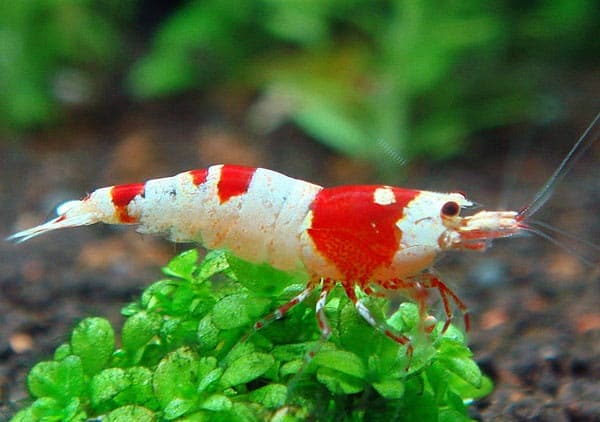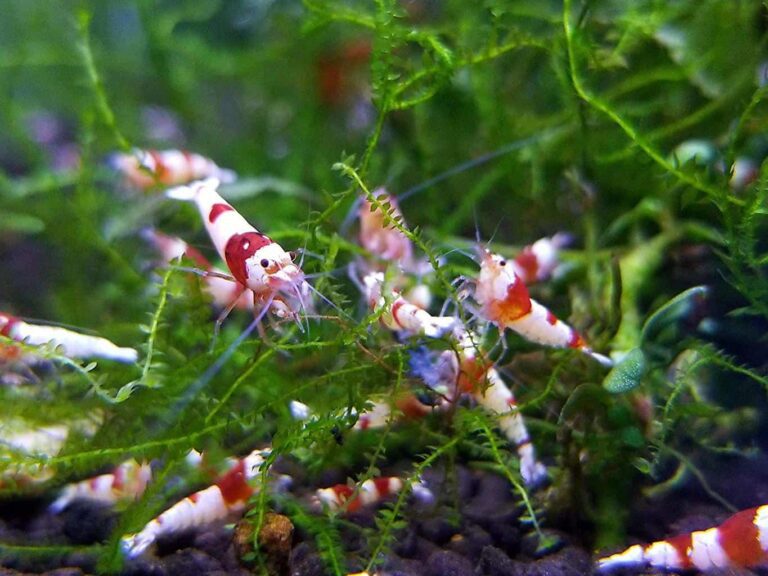Whether you are a shrimp breeder or just a newbie aquarist, there is one thing that you need. And that is creating the best planted tank for those adorable little things. And for that you need the best plants for shrimp tank.
Plants act as natural filters, give the shrimps hiding spaces, present something extra to nibble on, and can make them feel more at home. They also provide O2, absorb CO2, NO3, and other toxins, and most importantly, helps to balance the pH. No wonder they’re so popular.
Aquatic plants like Water Hyacinth, Dwarf lilies, Java moss, etc. are great plants for a shrimp tank as they look good and provide a sublime aquatic atmosphere for your baby shrimps.
There are plenty more plants you can choose. Find out about them below:
Picking The Right Plants for a shrimp tank
In order to find the most suitable plants for your tank, some crucial factors need to be considered. So, if you want to pick the best plants for your tank to create an eye-catching aquascape where your pets can thrive, this is just the place for you; because I’ll be showing you exactly what you need:
First of all, you need to pick where you’ll house them. Do some research and find out what water conditions are necessary. Different plants have different growth. Some plants grow rather quickly, while some don’t grow at all. Few need to be planted precisely, while others can just float around or attach themselves with ornaments.
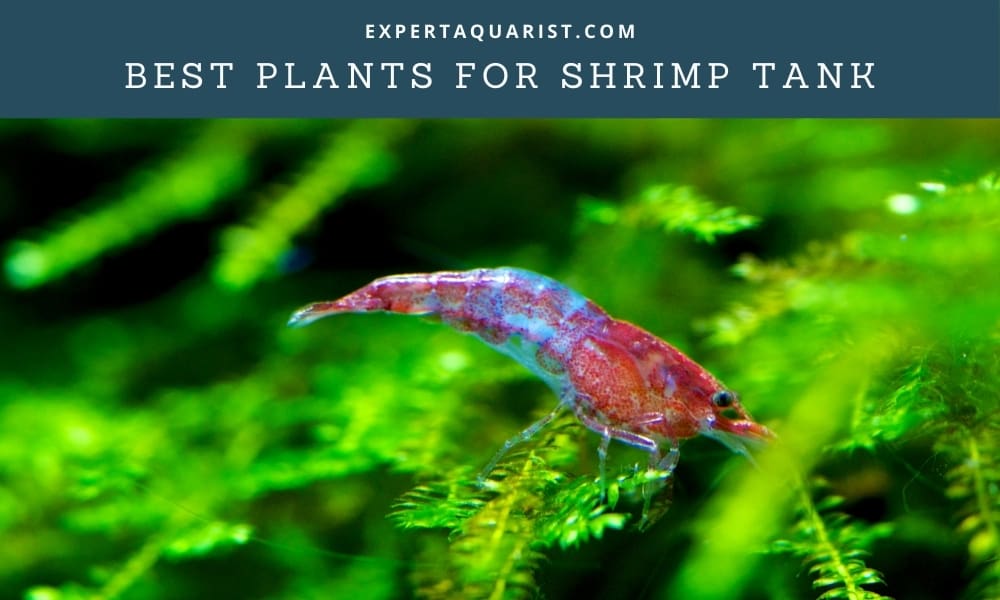
You should avoid plants that thrive and have big leaves if it’s a nano tank since they can make the space quite packed. Beginners would do well by picking low-maintenance plants as they don’t need much attention. Shrimps are scavengers and will eat anything, so get plants that shed a lot.
Shrimps are pretty easy to keep, but they can be sensitive to sudden changes in water conditions, so you need to check if the plant you are getting will work well with them. For example, shrimps do not require nitrates, but some aquatic plants need nitrates, so you can’t put them in the tank.
Other essential factors that you need to check are light, temperature, water hardness, pH level, etc, while choosing plants for your shrimp tank.
With all these factors in the count, here’s a list of the 10 best plants for a shrimp tank. These plants are beginner-friendly, not very fussy, and can provide all that is needed for better and healthy shrimps in your beautiful shrimp tank.
1. Java moss

Java moss is one of the most popular choices for aquarium plants. It’s hardy, low maintenance, and beginner-friendly. It can thrive on a wide scale of water parameters and provides rapid growth (5-10 cm) without fertilization. Java moss doesn’t require intense light or CO2 and can be attached to any surface, so the placement is no fuss.
Since it doesn’t have any true roots, you can just throw the plant in to float freely, or it can attach itself with driftwoods, rock-like ornaments using rhizoids. Java moss provides ample surface space and is excellent for carpet coverage. Also, due to their cobweb-like structure, it catches many free-floating particles on which the shrimp can graze on.
Although this moss can do just fine in low light, exposure to strong light and warm temperature can affect its growth. The warm temperature may slow down the development, and intense light means it’ll grow faster. That causes rapid algae growth on the leaves. While the shrimps can munch on the algae, too much of it may result in browning and dislodging.
Shrimps are shy creatures. They love to play hide and seek, so you can create a safe space for them using java moss for hiding and molting. Just make sure to check and shake the moss while taking them out in case some baby shrimp is still hiding in there.
2. Anubias
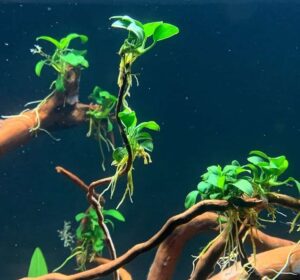
Another popular,hardy and easy to care for plant is anubias which would make a great addition to your shrimp tank. This aquatic plant is adaptable, grows in subdued light, requires little to no co2, and basically just has flexible requirements and will add to the decor of your beautiful aquascape.
Like java moss, Anubias have no real roots so they can just float or root on ornaments using rhizomes. However, they have to be planted right, and you don’t wanna bury them deep in the substrate. Their growth can relatively be slow, but they do need trimming and pruning.
The coarse dark green leaves of Anubias are ideal for algae growing which your pet shrimps would be very grateful for. They can’t be broken easily during maintenance and provides exploring and hiding space for the shrimps. If you own a nano tank, you need to keep the plants in the back since they can grow quite a bit.
Also, if you are worried that anubias is dangerous for shrimps, rest assured that it’s just a myth. If you maintain systematic water change and take out plants that may contain poison in their leaf juice before cutting, you have nothing to worry about.
3. Subwassertang

Technically a fern, Subwassertang is a shrimp favorite. They like cold climates, do well in soft water, and low to moderate lighting. Your pets will love you for adding this plant to the tank. Because they grow in bushes, Subwassertang can provide them with enough space for exploring and hiding.
One big reason breeders prefer them over moss is they can flush toxins out and keep the tank safe. Subwassertang also oxygenates the tank. They have slow growth, so you can add fertilizers if you want.
Subwassertang is another of those plants that have no real roots, so they can just float around. But if you want a neater look, you can just attach them with driftwood or any other decors.
4. Pearl Weed

Pearl weed or baby tears can be the best friend of your shrimps if you’re just starting out. This short-stemmed plant is low maintenance and is adaptable to various situations.
It can grow in a variety of pH and climatic conditions. The primary source of its growth is the nutrients it absorbs through its roots. Light is another important factor that has a say in it. How so? Low lighting influences it to grow vertically, whereas it’ll develop a carpeted look if the lighting is intense.
As this plant can be placed anywhere, you can put it in the background, foreground, or use it for carpet coverage. The plants can also be designed any way you prefer according to your tank by trimming and pruning.
5. Bucephalandra

This beautiful flora grows near running water in shady jungle grooves and comes in different sizes and hues. It’s an epiphyte like Anubias and relatively easy to grow. Shrimps can hide behind its leaves as it gives nice coverage in the bottom of the tank.
While it can be easy to take care of, lighting affects its colors. The colorful Bucephalandras need more light, or they will turn green. Its growth is rather slow, and you can add a tiny amount of fertilizers and CO2 though they can grow without those just fine.
6. Dwarf Lilies

If you’d like to see lily pads in your tank, I have just the plant for you. Dwarf lilies are very pleasing to the eye and come in different colors.
They have slow growth and can flower in a perfect water condition. You need to be careful with Dwarf lilies placement and plantation despite them being quite hardy. You have to make sure they are fit to go in the tank. Pick older ones instead of baby ones since they are more developed.
Don’t bury the bulb all the way, as it will cause the base to rot. Just carefully place them in the substrate and give them a minute before putting the shrimps in.
7. Vallisneria
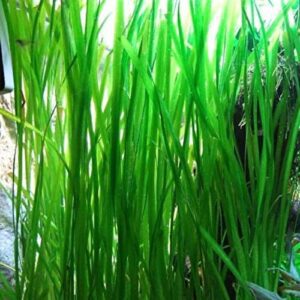
This grass-like aquatic plant is excellent if you are caring for many shrimps. They create a vast space for the shrimps where they can hide and explore. Also, the algae grown on their long blades are shrimp’s favorite thing to eat.
Vals can grow quite fast and jungle-like, so it’d be best if you don’t put them in your nano tank. You can find the s. maller versions of them, but they need constant trimming and can take quite some space.
And while cutting them, you need to be careful because they are a sensitive bunch. CO2 and fertilizers aren’t exactly absolute necessities, but they grow well when these two are applied.
8. Cryptocoryne
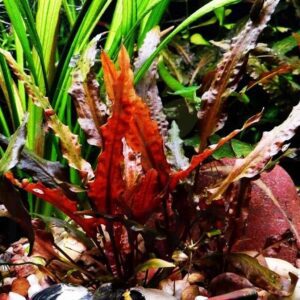
Next, we have Cryptocoryne. A genus of beautiful aquatic plants. They are very undemanding, come in many varieties. You can have a whole collection of them, and your tank will look great.
Cryptocoryne requires a meager amount of light and nutrition. They can get their nutrition from shrimp leftovers and don’t need added fertilizers and CO2.
However, you might wanna watch out for a minor nuisance that is crypt melt. They can be sensitive towards sudden change in water parameters, and that might cause the leaves to melt.
9. Marimo Moss Ball

These northern euraisian algae are unique in appearance and quite popular among fish keepers. They are also called seaweed balls and go well with shrimps in the tank.
They prefer cold water and require fewer nutrients. But you have to make sure the water parameters stay at their liking, or otherwise, they can be killed by an overgrowth of algae on them.
Shrimps can have fun riding and playing with them, and they provide the shrimp with algae food. Despite that little algae problem, they are not that hard to maintain. They can create their own food, and no fertilizers are needed.
10. Water Hyacinth

The last but not the least aquatic plant on our list is the beautiful water hyacinth. They have round leaves and are actually free floaters because of their air-filled stems. Water hyacinths have hair-like roots, and the shrimps like to hide behind them. They can also finish off all the algae that grow in the roots.
One of the best advantages of water hyacinth is they are great for filtering out all the nitrates from the water. However, if your tank is small, maybe putting water hyacinths won’t be a good idea. Since they float on the surface, that can block out the lights and cause all other plants and fishes discomfort.
Plants(and things) to do and avoid
While shrimps are very low maintenance and there is a wide range of plants you can pick for your aquascape, there are some things you need to look out for.
- Commercial Nursery grown plants may contain harmful chemical pesticides in them that could hurt your pets.
- Hygro Balsamica, a plant that contains a toxic substance, can be very dangerous for your shrimps.
- Plants that are very sensitive to water conditions and can release nutrients and toxins once decayed must be avoided.
- Some fertilizers contain copper, which is dangerous for shrimps, so you need to be careful with that.
- Plants should be trimmed and pruned whenever needed, but you have to be careful. some leaves may contain poisonous leaf juice, so it’d be best to take them out for pruning. (Anubias and crypts are not toxic. It’s just a myth)
- Do not use rusty scissors to cut plants in the water.
- Always maintain proper systematic water change.
- Be Aware of sellers who sell non-aquatic plants disguised as aquatic plants.
- Since shrimps are scavengers and will eat anything you need to be cautious of what particles get in the tank.
- Too much CO2 can kill your plants.
Build your very own shrimp odyssey!
So, these are 10 aquatic species that are on my personal list for the best plants for shrimp tank. They’re wonderful additions for any aquatic environment. You can pick any one of them or mix them up to decorate your tank as there are so many options. It all depends on your personal preferences and what works best for your little shrimp babies.

